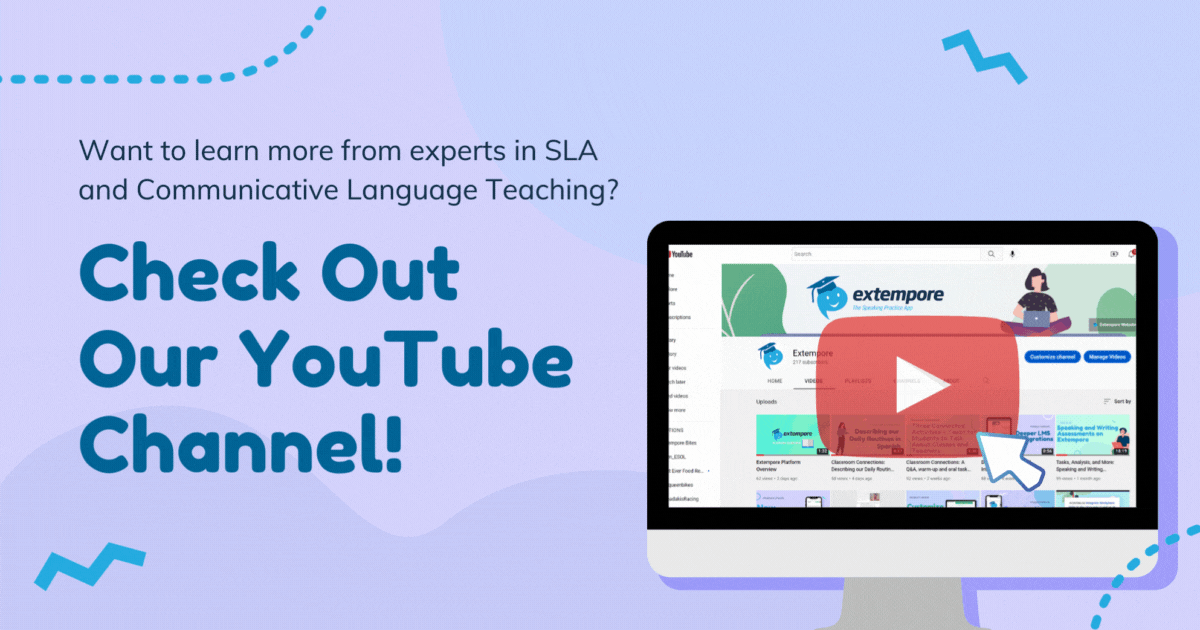
There's been a lot of talk these days in educational circles about differentiating instruction. In some ways, we world language teachers have been ahead of the curve here, partly because it's inherent in our classrooms to some degree. In other words, we teach different skills--listening, speaking, reading, and writing--in an assortment of ways, so providing different pathways to learning is a natural part of our teaching repertoire.
However, differentiated instruction isn't just about assessing learning along the four modalities. It also implies an attempt by the teacher to tailor instruction to meet individual needs, which means that we always need to be on the lookout for ways to create new contexts for learning. The possibilities are nearly endless, but, with that in mind, here are 8 easy ways to start differentiating speaking practice in your world language classroom. If you rely on a strategy that's not on the list, we'd love to hear it!
- Pronunciation/Intonation practice. It's not exactly communicative, but learning standard pronunciation and/or intonation can give students some confidence early on and lay the foundation for future successful language learning. It can be done in the classroom as a warm-up activity (tongue twisters are good way to make it fun!) or even done remotely on Extempore in anticipation of a new unit. Start with basic sounds, then move onto something more difficult, like consonant clusters or diphthongs. Then try intonational features, like question formation.
- Brainstorming as a large group. Before embarking upon a new unit or lesson, get a conversation going in the whole-group setting, in which students answer simple questions ("What do Americans usually eat for breakfast?") with one or two vocabulary items or short phrases. Your students will activate prior knowledge, learn from each other, set the stage for new knowledge, and develop confidence speaking aloud.
- Information gap tasks. There's a reason that information gap tasks are a hallmark of the communicative classroom; it's because they work. Students work together to solicit and give specific information to complete a task, and, because each student is most likely working only with one other partner, the anxiety level is dramatically reduced. It's a win for everyone!
- Games/competitions. Make speaking fun! There are all sorts of game-y activities that you can use in the classroom to get your students excited about speaking: Bingo, Who-am-I?, Twenty Questions, $100,000 Pyramid, or Taboo, just to name a few.
- Speed dating. We've probably all done a boring old interview in class. Students often race through them without providing a whole lot of information. However, I find that if I frame the same activity as a speed dating session, in which students must rotate partners after a successively shorter interval of time (5 minutes, then 4 minutes, etc.), students engage more enthusiastically, provide more information, and feel more satisfied with their performance afterwards.
- Role-play. Provide opportunities to your more kinesthetic learners by asking them to get up and move around by role-playing a scenario. To encourage more spontaneous speech, ask them to work without pen and paper. Students could record a video of their finished product via Extempore and present it to the entire class.
- Discussion groups. Although these may be difficult to carry out at the lower proficiency levels, it's never a bad idea to get a conversation going, even if it's a short one. When interacting in pairs or groups, students will often engage in peer-to-peer scaffolding, thus pushing each other towards greater proficiency. For your visually-minded students, use an image to spark conversation.
- Cultural Presentations. I know, it sounds dry and more than a little dull. Been there, done that, right? But presentations can be a lot of fun if you jazz them up a little. Instead of asking everyone to come up to the front of the classroom one at a time (i.e. walking the plank), try organizing them like a speed dating session (see #5 above) or in marketplace style, in which they must present their work as best as they can in short bursts to a rotating audience. They'll get multiple reps in, be more likely to talk more spontaneously, and everyone will learn more about the cultural topics at hand when interacting one-to-one. And don't forget all the speaking practice that happens as the student works independently at home while preparing the presentation!
Many of us have probably used some of these before (or maybe even all of them), but it's easy to fall into the same old routine of using the same activities in the same ways. It's important to keep reminding ourselves that speaking can and should happen in different contexts. If you have any tips about differentiating speaking practice, let us know!
If you are still looking for something fresh and new, we have created an eBook with 29 FREE speaking activities to use in your classroom! Just click the image link below!



